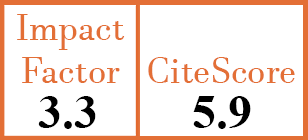Paediatric Rheumatology
Clinical course and outcomes of childhood-onset granulomatosis with polyangiitis
K.E. James1, R. Xiao2, P.A. Merkel3, P.F. Weiss4
- Division of Rheumatology, Department of Paediatrics, Children’s Hospital of Philadelphia, PA, USA. karenejames24@gmail.com
- Department of Biostatistics, Children’s Hospital of Philadelphia, and Department of Biostatistics and Epidemiology, University of Pennsylvania, Philadelphia, PA, USA.
- Department of Biostatistics and Epidemiology, and Division of Rheumatology, University of Pennsylvania, Philadelphia, PA, USA.
- Division of Rheumatology, Department of Paediatrics, Children’s Hospital of Philadelphia; and Department of Paediatrics, Center for Paediatric Clinical Effectiveness, Children’s Hospital of Philadelphia, PA, USA.
CER9337
2017 Vol.35, N°1 ,Suppl.103
PI 0202, PF 0208
Paediatric Rheumatology
Free to view
(click on article PDF icon to read the article)
PMID: 27749233 [PubMed]
Received: 12/02/2016
Accepted : 15/06/2016
In Press: 06/10/2016
Published: 20/04/2017
Abstract
OBJECTIVES:
To characterise the clinical course and outcomes of a cohort of children with granulomatosis with polyangiitis (GPA).
METHODS:
Retrospective cohort study of children diagnosed with GPA in a tertiary care facility from 2000-2014. All subjects met the American College of Rheumatology 1990 criteria for GPA or the 2008 European League against Rheumatism/Paediatric Rheumatology International Trials Organisation/Paediatric Rheumatology European Society criteria for GPA. Predictors of readmission were determined using univariate logistic regression. Kaplan-Meier analysis was used to demonstrate the relapse-free survival probability in follow-up.
RESULTS:
Twenty-eight children (median age 14.7 years) were diagnosed during the study period. At presentation 14 (50%), 5 (18%), and 4 (14%) children required intensive care unit care, ventilator support, and dialysis, respectively. One-third of the children in our cohort had gastrointestinal involvement, one-quarter of whom were previously diagnosed with inflammatory bowel disease. Two-thirds of children were readmitted. Renal failure and infections accounted for most readmissions. Twenty-three (85%) patients achieved remission, however, 11 subsequently flared (median time to flare 21.5 months). Haematuria at diagnosis was significantly associated with readmission (OR 6.25). At a median follow-up of 3.3 years (range 5 months to 6 years) 10 (37%) children had chronic kidney disease (> stage 2) and none of the children died.
CONCLUSIONS:
Children with GPA frequently have severe disease presentations including significant renal, respiratory and gastrointestinal involvement. While most children with GPA achieve remission, nearly half have subsequent relapses.


